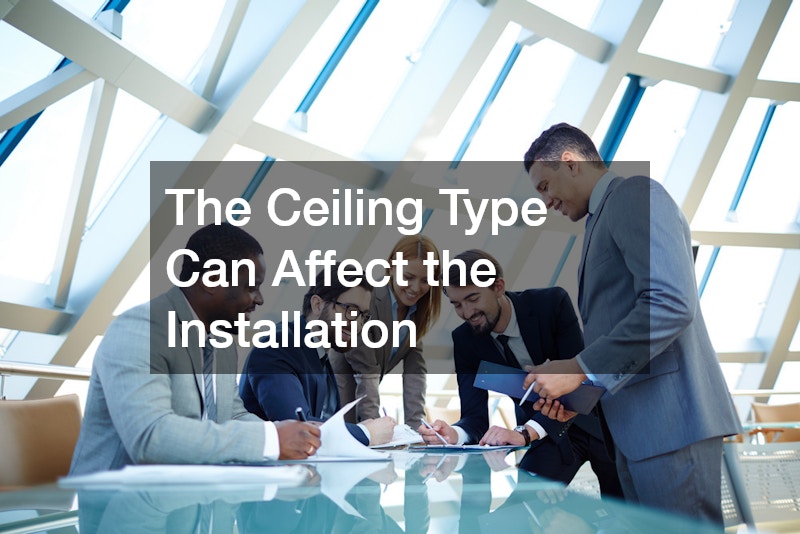LED recessed lighting, commonly known as can lights or downlights, has become a popular choice for homeowners and businesses alike due to its sleek design, energy efficiency, and versatility. It is a type of lighting fixture installed into a hollow opening in the ceiling, creating a seamless and minimalistic look that is perfect for modern and contemporary spaces. In this article, we’ll cover everything you need to know about LED recessed lighting, including its benefits, different types, placement tips, and what to consider before installation.
Benefits of LED Recessed Lighting
One of the main reasons people choose LED recessed lighting is its numerous benefits. These lights offer several advantages over traditional lighting fixtures:
1. Energy Efficiency:
LED recessed lights are highly energy-efficient.
Compared to incandescent or even compact fluorescent lights, LED bulbs use significantly less electricity to produce the same amount of light. This means lower energy bills for you in the long run. Additionally, LED lights have a longer lifespan, often lasting up to 25,000 to 50,000 hours, which reduces the need for frequent replacements.
2. Aesthetics and Design:
LED recessed lighting provides a clean, streamlined appearance because the fixture is flush with the ceiling. This makes it an excellent choice for homeowners looking to achieve a modern and minimalist aesthetic. The lights blend seamlessly into the ceiling, making rooms feel more spacious and less cluttered compared to hanging or bulky light fixtures.
3. Versatility:
One of the best aspects of LED recessed lighting is its versatility. These lights can be used in virtually any room, including living rooms, kitchens, bathrooms, bedrooms, hallways, and even outdoor spaces. They are available in a variety of shapes, sizes, and color temperatures, making it easy to customize the lighting to suit the mood or function of each room.
4. Directional Lighting:
LED recessed lights provide directional lighting, meaning they can be adjusted to focus light in a specific direction. This makes them ideal for task lighting or highlighting certain areas, such as artwork, countertops, or reading nooks.
Types of LED Recessed Lighting
When choosing LED recessed lighting, it’s essential to understand the different types available to ensure you select the right one for your space.
1. Downlight (General Lighting):
This is the most common type of LED recessed lighting. It directs light downward and provides general lighting for the room. These lights are ideal for areas where you need even, ambient lighting, such as living rooms or kitchens.
2. Adjustable (Directional Lighting):
Adjustable or gimbal LED recessed lights allow the user to change the direction of the light. This is particularly useful if you need to highlight specific areas like a feature wall, artwork, or workspace.
3. Wall-Wash Lights:
Wall-wash LED recessed lights are designed to spread light evenly across a wall, creating a soft, diffused effect. These lights are perfect for accent lighting, especially in spaces where you want to draw attention to textures or architectural details.
4. Shower and Wet-Location Rated Lights:
If you’re installing LED recessed lights in areas with high moisture, such as bathrooms or outdoor patios, it’s essential to choose wet-location rated fixtures. These lights are designed to withstand humidity and water exposure without compromising their performance or safety.
Key Considerations for LED Recessed Lighting Installation
Before installing LED recessed lighting, there are a few factors you’ll want to consider to ensure the lights meet your specific needs.
1. Room Size and Light Spacing:
The size of the room will help determine how many lights you need and how far apart they should be spaced. A general rule of thumb is to space lights about 4 to 6 feet apart. However, this can vary depending on the height of your ceiling and the brightness of the lights. For rooms with higher ceilings, you may need more powerful fixtures or closer spacing to achieve the desired level of illumination.
2. Ceiling Type:
The type of ceiling you have can affect the installation process. If you have a standard drywall ceiling, installation is usually straightforward. However, if you have a concrete ceiling or a space with limited access, it may be more challenging to install recessed lighting. In such cases, hiring a professional electrician is recommended to ensure the installation is safe and efficient.
3. Dimming Capability:
Many LED recessed lights come with dimmable features, allowing you to adjust the brightness according to your needs or the time of day. This is especially useful in rooms like living rooms or bedrooms where you may want softer lighting in the evenings. Ensure that the LED lights you choose are compatible with dimmer switches to take advantage of this feature.
4. Color Temperature:
LED recessed lights are available in a range of color temperatures, typically measured in Kelvins (K). Warmer light temperatures (2700K-3000K) provide a soft, cozy ambiance, making them ideal for living rooms and bedrooms. Cooler light temperatures (4000K-5000K) are better suited for task-oriented areas like kitchens, bathrooms, or offices, as they provide brighter, more focused lighting.
Watch the video above to learn more and hire commercial lighting services today!
.


